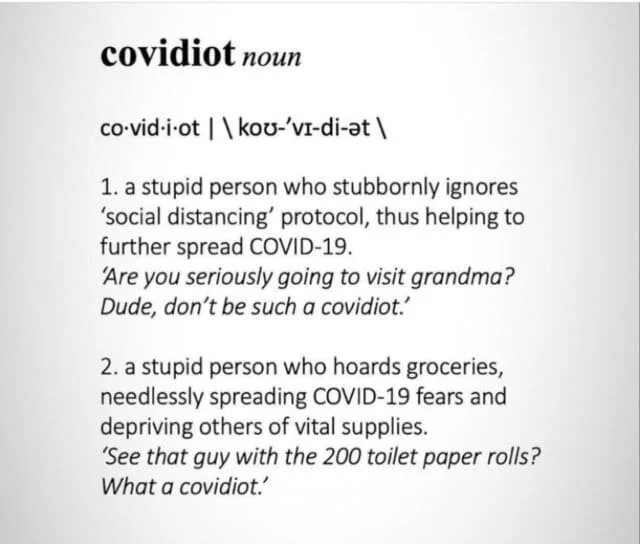“To be a feminist, one first has to become one.” This is one of the opening sentences of Sandra Lee Bartky’s seminal essay on feminist consciousness. (1) In the early days of gay liberation and second-wave feminism, it was generally understood that we—people living in advanced industrial societies, with their deeply-rooted norms—had internalized many of the oppressive values of those societies. If we were going to change the world, therefore, we were going to have to change ourselves in the process. For this reason, the gay liberation and women’s movements practiced what they called “consciousness-raising,” in which members of a community—whether this was a commune or an activist circle or the office workers who staffed the Gay Liberation Front office—gathered together and intentionally set out to reshape their views, emotional dispositions, and desires in order to become more compassionate, fair, revolutionary, etc. Yet this practice has faded out over the decades, as people have become increasingly wary of having their outlooks and desires questioned.
Since the simultaneous success and failure of the struggles of the 1960s, a prevailing cultural impulse has been the unapologetic valorization of one’s desires. This hedonistic appropriation of the rhetoric of liberation has been a boon to consumer capitalism, which continually molds and capitalizes on our desires. According to Amia Srinivasan, there are deep questions that must be asked about the politics of desire in our culture, yet contemporary feminism tends to skirt this issue. Perhaps out of a reaction to the moralizing of certain radical feminists in the 1970s and 80s, contemporary feminists have grown wary of questioning women’s choices—especially their sexual choices. Implicit in this rejection of critically evaluating outlooks and desires is the notion that one’s desires, ambitions, etc. must be the correct ones by virtue of their host’s belonging to a particular identity group. The problem with this is that tends to neglect the highly political formation of desire. Moreover, it fails to take into account the fact that oppressed and/or subjugated people are capable of effectuating further oppression and subjugation upon others. Therefore, according to Srinivasan, in failing to question one’s desires and outlooks, the non-self-critical political stance "risks covering not only for misogyny, but for racism, ableism, transphobia, and every other oppressive system that makes its way into the bedroom through the seemingly innocuous mechanism of ‘personal preference’.” (2)
Consciousness-raising, in the gay and women’s movements, began with the assumption that the personal is political. For the participants in these movements, if the personal is political, then the terrain of political struggle extends into oneself. “For many feminists,” Bartky reports, “this involves the experience of a profound personal transformation, an experience which goes far beyond that sphere of human activity we regard ordinarily as ‘political.’” Such a struggle involved a sometimes total transformation. According to Bartky, “the feminist changes her behavior: She makes new friends; she responds differently to people and events; her habits of consumption change; sometimes she alters her living arrangements or, more dramatically, her whole style of life.” (3)
Consciousness-raising groups resemble what Michel Foucault referred to as “local centers of power-knowledge,” in which “different forms of discourse—self-examination, questionings, admissions, interpretations, interviews” operate as a “vehicle of a kind of incessant back-and-forth movement” that produces both knowledge and subjectivity. (4) In the Preface to Deleuze and Guattari’s Anti-Oedipus, Foucault emphasized the importance, in any political struggle, of forensically locating and excising the “inner fascist” that one develops in their engagement with power, and a major theme in Anti-Oedipus is the “micropolitical” struggle with internalized political and economic regimes at the psychological level.
Often, we hear commentary about the malleability of human beings. What we hear less often is the extent to which human plasticity is most apparent in social and collective settings. Consciousness-raising was highly effective because it sought, through “self-examination, questionings, admissions, interpretations, interviews,” etc. to produce new subjects in collective settings. Consciousness-raising groups in the Gay Liberation Front would invite “each individual [to talk] about his or her individual experience of oppression, growing up, coming out, etc.,” and in doing so, “a general pattern could be discerned, and so a cognitive leap could take place in the minds of the group. They would then come to see the oppression of gay people as part of the general gender system of our society, with common features despite individual idiosyncracies.” (5) Drawing from the experiences and desires of individuals, the consciousness-raising group would attempt to produce a new intellectual, emotional, social, and sexual ecology whose imperatives would then, if all went according to plan, become internalized by the individuals. The group would seek to generate radical solidarity and new kinds of interrelation and, ultimately, desiring, based on the aggregate experiences and desires of those present. Within these settings, imbalances, scarcities, power dynamics, surpluses and deficits could be identified and reworked.
Yet this practice was difficult, and yielded different levels of reward for its differently-positioned participants. The benefits of participating in a collective project of reworking sexual desires would be less clear-cut for a person privileged by the undisturbed operation of social and sexual hierarchies, for example. At a certain point, the participants in both the women’s and the gay liberation movements began to recognize distinct and diverging interests, and, gradually, self-sorted into distinct, stratified identity groups (with middle-class gay men over here, radical separatist lesbians over there, and the Marxist-feminists over there). In these self-isolated communal settings, narrow concerns produced shallow and ineffective political practices that could not build a broad or comprehensive political movement, nor offer workable emotional, social or sexual ecologies with the power to challenge the normative mainstream. (6)
Here, I do not believe that the failure was consciousness-raising, but the allure of empowerment—not together, but separate. Rather than doing the hard work of cultivating new selves in response to the complex desires and resources and experiences of a broadening collective, the gay and women’s liberation movements of the 1970s eventually succumbed to desires they already had. Is there any reason to believe that our generation will be able to do better? Perhaps a first step in ensuring that we do would be to revive the fundamental ethos of collective consciousness-raising, and to use this as a tool in remaking our desires, and, in the process, remaking ourselves and our world.
Notes:
(1) Sandra Lee Bartky, Femininity and Domination (New York: Routledge, 1990), 11.
(2) Amia Srinivasan, “Does anyone have the right to sex?,” London Review of Books, Vol. 40, No. 6 (March 22, 2018), 5-10.
(3) Bartky, 11.
(4) Michel Foucault, The History of Sexuality, Volume I: An Introduction, trans. Robert Hurley (New York: Vintage Books, 1990), 98.
(5) Aubrey Walter, Come Together: The Years of Gay Liberation, 1970-73 (London: Gay Men's Press, 1980), 18.
(6) See my 2018 MPhil dissertation: “‘Engaged Withdrawal:’ Communal Living and Queer Spatial Politics in London’s Gay Liberation Front, 1971-1974” (University of Cambridge, master’s dissertation, 2018) https://www.academia.edu/37273032/_Engaged_Withdrawal_Communal_Living_and_Queer_Spatial_Politics_in_London_s_Gay_Liberation_Front_1971-1974.


















